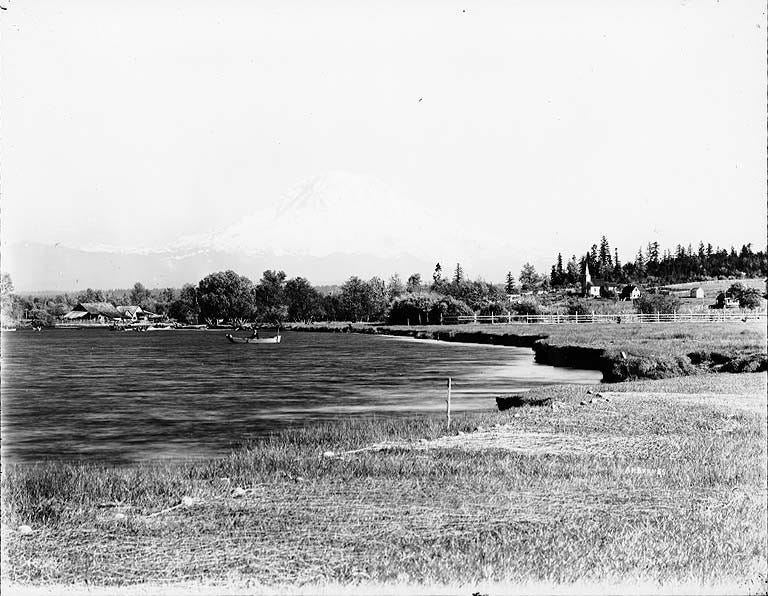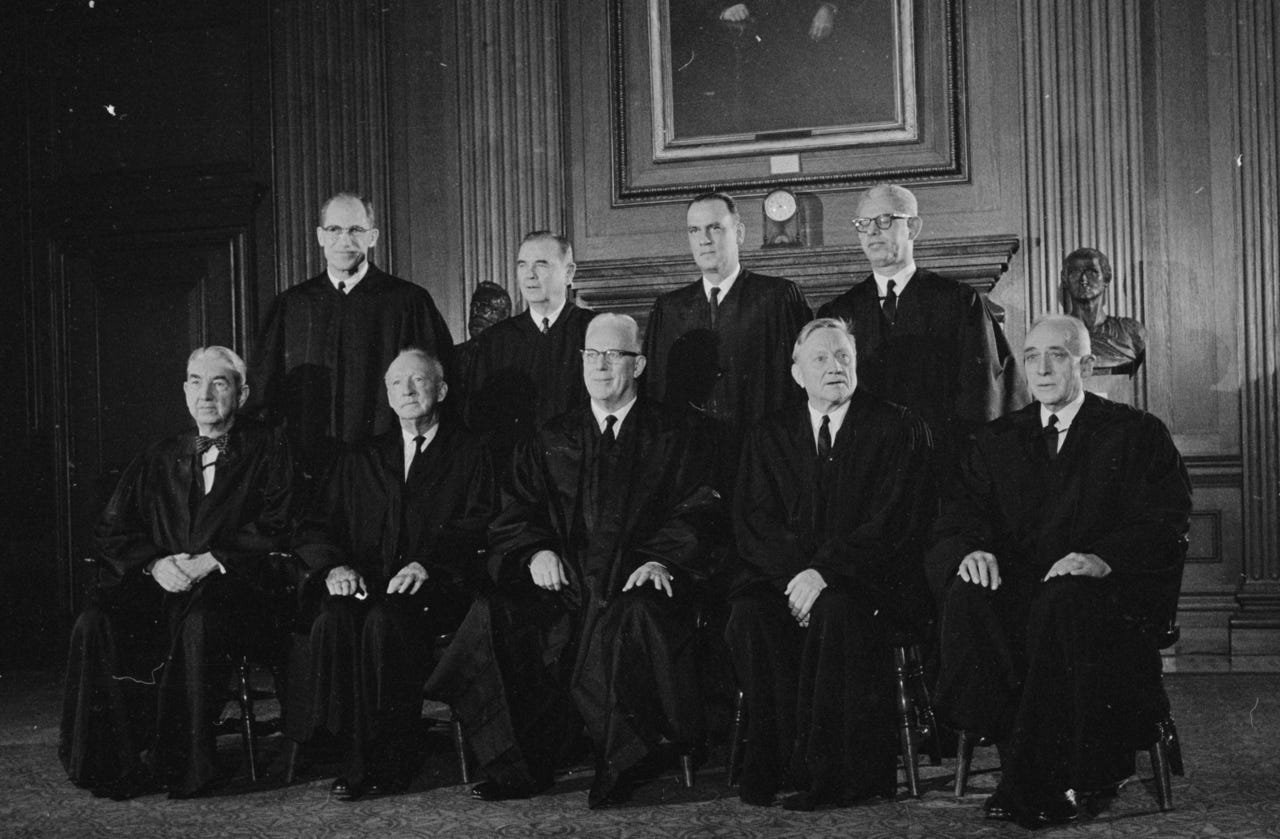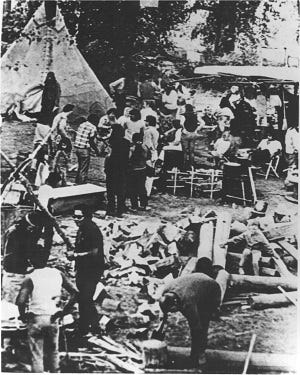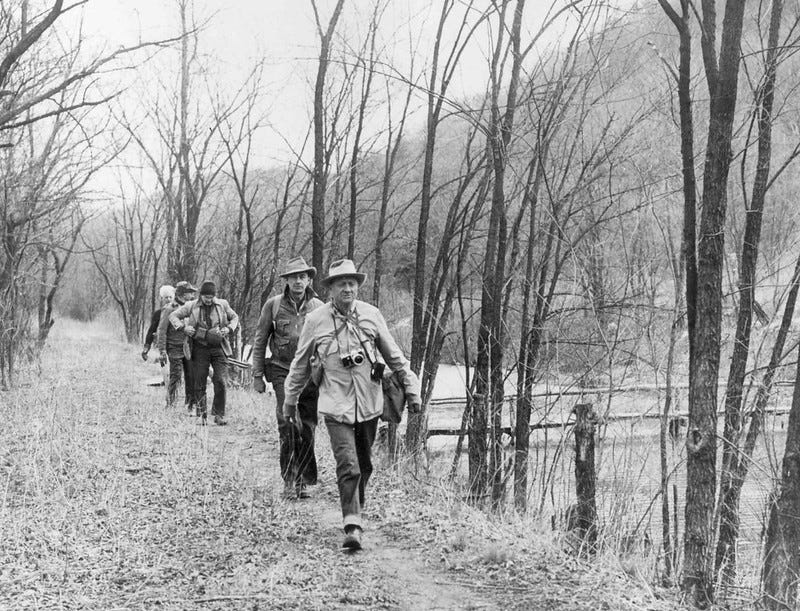About three months ago, I wrote about the Boldt Decision on its 50th anniversary. I return to The Classroom today with a similar topic—Native American fishing rights in the Northwest—as a way to not only deepen the analysis about that topic but also to comment on judges and making law. Read on!

The Puyallup Cases
A series of three cases concerning the Puyallup Tribe's treaty rights reached the US Supreme Court in 1968, 1973, and 1977. In each case legal questions centered on treaty fishing rights on the one hand and the state's power to enact conservation regulations on the other.
The context surrounding these cases was much the same as what the Boldt Decision alddressed, although specifics differed.
The first two decisions—Puyallup I and Puyallup II—interest me because Justice William O. Douglas wrote the unanimous opinions for the court. When I wrote my book on Justice Douglas, I used his Puyallup decisions to illustrate how Douglas balanced (or tried to) competing priorities.
Seeking Balance in Douglas's Opinions
In brief, here's what I explained there.
In the 20th century, courts pretty routinely affirmed treaty tribes' rights to fish. However as fish populations declined, states enacted conservation regulations that restricted those treaty rights, often through banning certain gear and nets. A regulation over set nets was the object of legal debate in the first Puyallup case.
While on the bench, Douglas typically found in favor of Indian self-determination and treaty rights. He also typically found in favor of conservation. In Puyallup I, he had to make choices.
Earlier in the litigation tribes stipulated that if they continued commercial fishing as they were they would "virtually exterminate the salmon and steelhead fish runs of the Nisqually River." Douglas could not abide such a future.
Douglas affirmed the state's right to "reasonable and necessary" regulations as long as it applied to all who fished. The state could not restrict the right to fish per se.
Subsequently, Washington, at the time hostile to treaty rights, redefined regulations on the Puyallup River to allow sport fishing (done primarily by whites) but disallow commercial steelhead fishing (done primarily by the local Puyallup Tribe). Once again, the case wound up at the Supreme Court where Douglas pointed out the plain discrimination of the regulation.
But Douglas added, "We do not imply that these fishing rights persist down to the very last steelhead in the river." The state can impose conservation practices. "The police power of the State is adequate to prevent the steelhead from following the fate of the passenger pigeon; and the Treaty does not give the Indians a federal right to pursue the last living steelhead until it enters their nets."
I wrote in my book about that passage: "This statement read like a typical Douglas opinion, balancing complexity and values—legal and personal."1
Thoughts on Judging
This brings me to the second part of today's Classroom "lesson."
Justices are supposed to be constrained by the law and legal principles. We often hear complaints about justices "making law" instead of "interpreting the law." The latter is supposed to be what happens.
A case appears. The legal conflict is identified. The proper laws are found. Presto: solution. Something like that is how we are often told how it is supposed to work.
Most often in this story, a foil was created: the Warren Court of the 1950s and 1960s that wrote decisions in favor of civil rights, broadly defined. "An activist court," said critics, charging Douglas and his brethren with making law or legislating from the bench. This tired story is still common fodder in political circles.

Judges are people with their own experiences and values—values that are reflected in what they write. Douglas's commitments to social justice and minority rights on one hand (imperfectly expressed over his long tenure) and conservation on the other demonstrate this humanity clearly. My book shows this repeatedly in his case. I was, frankly, uninterested in his doctrinal legacy; I was only interested in how his opinions reflected and expressed his personal values.
Still, judges have been historically constrained in their judging. They are constrained by law and politics, of course in some ways. But they have also been constrained in their reasoning: they have needed to present it. There is a fair amount of evidence that justices know the outcome they want (surprising, right?) and then figure out how to present sensible reasons for it. That is the (simplified) argument of G. Edward White in his classic The American Judicial Tradition.
Here's White:
Judges had an obligation to give reasons for their results; judges had an obligation not to usurp the powers of other branches of government; judges were required not to deviate too far from the consensual values of their times. Judges, thus, were not like politicians because they were constrained by the obligations of judicial reasoning. Not only must judges give reasons for their results, those reasons must at least make an effort to persuade not only those inclined to support the results but those not inclined to. Reasoning, viewed in this fashion, becomes the vehicle by which the judge seeks to convince his or her audience that more than naked subjectivity explains the result. The reasoning offered is intended itself to serve as a constraint on that subjectivity.2
White is saying that judges have to explain themselves through law, not using "naked subjectivity." I'm not a legal scholar, but this interpretation makes sense to me in what I’ve seen of the historical (and contemporary) record. And evidence seems to abound to confirm White's interpretation. How often do we see justices express one legal philosophy when it suits their purposes only to deploy its opposite in another case?
Douglas was a special case, though (which is one of the reasons he has been fascinating for me to write about for decades). White called Douglas the Anti-Judge, because the justice didn't much play the game.
Rather than being constrained by institutions or laws, according to White, Douglas thought the "individual judge was constrained only to get a decision right." Rightness is based on the individual here. White continued, "Douglas's approach to judging would appear to constrain such persons only by their good instincts."3
As we might observe, not all judges possess good instincts.
Final Thoughts
Being termed an "anti-judge" hardly suggests praise. And White's analysis suggest a shakier foundation of the legal profession than most of us want to believe in.
Douglas, though, may be an especially revelatory example. Without caring about institutional niceties and doctrinal subterfuge, Douglas displayed his values at work—and doing so reminds us that all judges are humans, not legal machines. And all legal projects or agendas include something beyond the ideal of disinterestedness.
The Puyallup cases show this, I think. My assessment again: "This statement read like a typical Douglas opinion, balancing complexity and values—legal and personal." To pretend there is only legal complexity and no personal values informing the making of law, the judging of laws, seems disingenuous and naive.
Closing Words
Relevant Reruns
For more context, revisit my newsletter on the Boldt Decision. For my take on another Douglas decision, even more weighted with values, check out this piece, my first for High Country News. (And of course, for much, much more, see The Environmental Justice.)
New Writing
My latest story is up here; it tells of our local program to identify local crops with roadside signs. More things are in the works.
This includes a new interview for paid subscribers, which will be available May 15.
As always, you can find my books, and books where some of my work is included, at my Bookshop affiliate page (where, if you order, I get a small benefit).
Taking Bearings Next Week
The Field Trip returns next week, if only I can get outside long enough. Stay tuned!
Adam M. Sowards, The Environmental Justice: William O. Douglas and American Conservation (Corvallis: Oregon State University, 2009), 123-25, quotation from 125.
G. Edward White, The American Judicial Tradition: Profiles of Leading American Judges, expanded edition (New York: Oxford University Press, 1988), viii.
Ibid., 403, 420.





